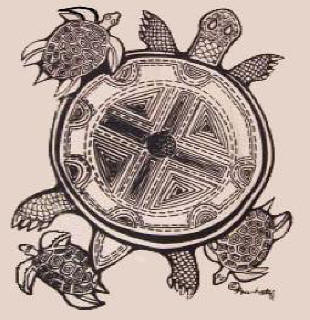|
LITR 4326 Early American Literature Model Assignments |
Final Exam Essays 2016 Sample answers for Optional short essay #3 on Charlotte Temple and / or Edgar Huntly. |
 |
Michael Bradshaw
Edgar Huntly,
the Foundation for the Weird
Edgar Huntly, by Charles
Brockden Brown is a precursor to the works of Gothic horror writers such as
Edgar Allan Poe and H.P. Lovecraft. While it is not a strictly a horror novel
itself, it introduces many elements that would be used by future writers.
Somnambulism, the use of nature as horror, and the intrusion of the weird into
the ordinary world are all staples of the horror genre, and
Edgar Huntly was among the first to
establish these tropes in literary fiction.
The full title of the novel is Edgar Huntly; or, Memoirs of a
Sleep-Walker. As can be expected,
somnambulism is a prevalent feature. Clithero digs in the woods while asleep.
Huntly himself starts sleepwalking and awakens in a pit. Sleepwalking is a
common horror trope and with good reason. The idea that the body can do things
while the mind is unconscious is unsettling, both to the victim, and those who
witness such an event. Outside of folklore, Edgar Huntly may be the first
to use it as a plot device.
When Edgar found himself in the pit, he was immediately thrust into the
world of the weird. With no recollection of how he got there, he was forced to
find his way out, then kill a panther with a tomahawk and ate it. Ending up in a
pit is usually something would remember, and killing and eating a panther isnít
a daily occurrence; the weird had intruded into the ordinary. From there, it
only became more insane. Huntly rescues a farm girl from Indians and hides in
the hut of Old Deb, also known as Queen Mab. Queen Mab is first mentioned in
Shakespeare as a fairy midwife, and appears sporadically throughout literature
to this day. Brown certainly would have read Shakespeare, and would not have
chosen the name by accident. The introduction of Mab makes the strange setting
even more surreal. Lovecraft may have created his own mythos with which to
terrify, but the intrusion of the supernatural starts with Brown.
Most of the supernatural aspects of Edgar Huntly take place outdoors,
furthering the trope of the times that nature is frightening. The elm tree is
where the weird begins, which is similar to The Indian Burying-Ground.
The branches of the elm tree block much of the sunlight, turning day into night
under its boughs. Nature at the time was a symbol for the unknown, the most
frightening thing of all. Fear of the unknown is a timeless part of the human
condition that all horror writers try to tap. Lovecraft and his Elder Gods are
merely an evolution of that fear that Brown first expressed in a literary novel.
Edgar Huntly was the first American novel of its kind, and as such
it has many flaws. The writing is a hodgepodge of adventure, mystery, and
horror, and the chapters long monologues wear thin. However, despite its growing
pains, its significance cannot be denied. Within its pages are the framework for
the American gothic horror genre. Charles Brockden Brown can be thought of as a
precursor to Poe, who in turn inspired Lovecraft. He is the unsung progenitor of
the weird.
|
|
|
|


